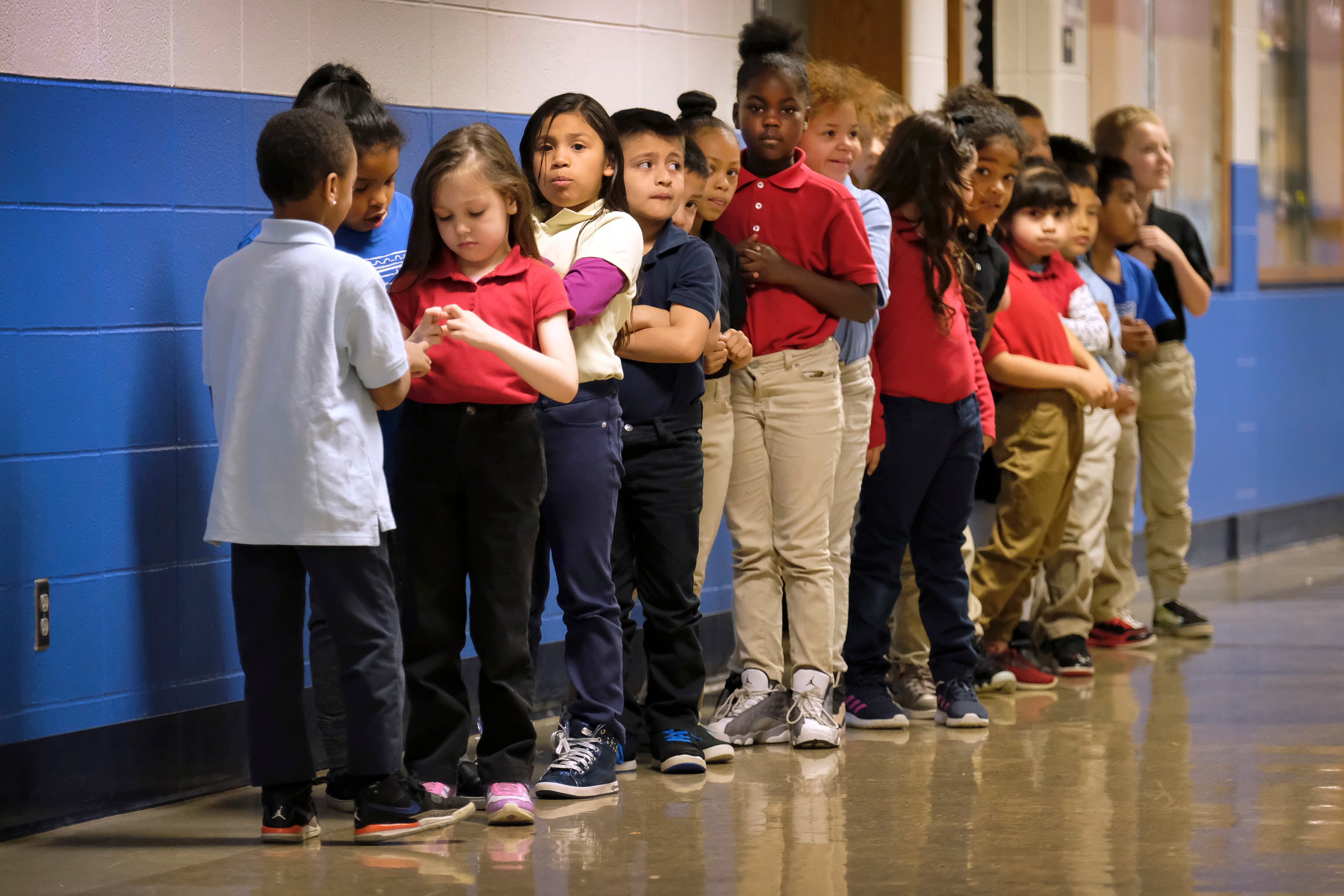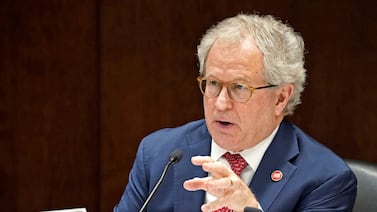Potential cuts to Indiana schools that offer virtual learning but don’t reopen school campuses this fall would harm schools serving more Black and Latino students, according to a Chalkbeat analysis.
Those funding losses would widen systemic inequities already made worse by the health crisis, as Black and Latino families are facing higher coronavirus infection rates, suffering widely from the recession, and often struggling to support at-home learning for their students.
“How much more can you continue to harm the most vulnerable students in our schools?” said Flora Reichanadter, superintendent of Pike Township schools in Indianapolis, which started the school year virtually Tuesday.
Last week, state Senate President Pro Tem Rodric Bray sowed confusion and concern when he appeared to backtrack on state promises that Indiana would fully support schools offering online instruction through the pandemic.
Bray, a Republican, warned schools that they would receive funding cuts if they only offered virtual instruction this fall, due to a law that reduces state dollars by 15% for students learning mostly or all online.
The cuts would come as a significant blow to schools trying to navigate the uncertainty of the pandemic, on the threshold of an economic crisis that threatens to slash future budgets. It’s not clear whether lawmakers will intervene, though many other leading Republicans, such as Gov. Eric Holcomb, House Speaker Todd Huston, and state Superintendent Jennifer McCormick, have pledged to fully fund schools.
When Bray put out his statement, about 40 districts and charter schools were planning to start the year completely remotely, according to a list compiled by the Indiana Department of Education. That’s less than 15% of Indiana districts and charter schools and likely a rough estimate, since the state did not require schools to report their plans and some have been quickly changing.
The schools that planned to start remotely enrolled nearly one-third of all Black students in Indiana, and 30% of Hispanic students last year, according to a Chalkbeat analysis of state data. In all, those schools encompassed nearly 20% of the state’s student population, even though they make up a fraction of Indiana’s almost 300 districts and charter school networks.
That’s likely because the communities pausing fully reopening classrooms have been hard-hit by the coronavirus, and the spread has been worse among Black and Latino populations, who tend to have less access to health care and work in essential jobs.
Districts in Indianapolis, northwest Indiana, and South Bend — including Indianapolis Public Schools, Gary Community Schools, South Bend Schools, and others — are starting the year remotely as local health officials are advising caution. IPS, which is 42% Black and 31% Hispanic, estimates it could lose $28 million through these cuts.
“We’re putting Black and Latino families in an impossible situation,” said Cristina Santamaría Graff, an assistant professor of special education and urban teacher education at IUPUI. “When you choose money over life, then there’s a problem.”
A legislative spokeswoman said Bray was not available Tuesday afternoon to comment on Chalkbeat’s analysis, and he did not return a phone message left at his Martinsville law office. The Martinsville school district, of which Bray is a graduate, is among those starting the year remotely.
Indiana leaders have stressed for months that schools can reopen classrooms safely, though they have left the decision largely up to local districts. They planned to provide full funding for students who chose to learn virtually due to health concerns, but Bray said leaders didn’t expect that some school districts would walk back reopening plans when coronavirus cases started to rise.
The funding reduction stems from a law meant to address full-time virtual schools, which receive less state support and took a further hit last year as a warning shot after a multimillion-dollar virtual charter school scam.
The law would technically apply the 15% funding cut to any student receiving more than half of their instruction online, including students choosing a virtual track or students in a hybrid model where they attend classes in-person on alternating days.
But Bray indicated that lawmakers favor changing the law for at least some students. State leaders have “a strong appetite” for fully funding students who opt for virtual learning tracks, Bray said last week, but “there is no guarantee such an exception will be made for schools that don’t give families the option of in-person instruction in a school building.” He didn’t address hybrid models.
State Rep. Ed DeLaney, a Democrat who represents an area that includes three Indianapolis districts starting remotely, said the legislature could solve this problem and shield schools from harm if it wanted to. He pointed to lawmakers agreeing to act early this year to pass a “hold harmless” provision that protected schools from low test scores on the new ILEARN exam.
“I believe children need to be in the classroom,” DeLaney said. “The problem is, in this environment, we need for the moment to use virtual and we can’t punish our students because of this necessity.”
When Black and Latino students in Indiana already encountered technology access obstacles in the spring and generally are less likely to pass standardized exams, graduate from high school, and go to college, “setting them back is just the worst possible thing,” he added.
In the days following Bray’s announcement, some of those roughly 40 districts have changed course — notably, those in Elkhart County will offer in-person options after some back-and-forth discussion with the local health department. Other schools are also set to reassess opening classrooms in the coming weeks or months.
Elkhart Community Schools Superintendent Steve Thalheimer wrote in an email to Chalkbeat that the district crafted a hybrid model after “verbal assurances that there would be a solution to keep 100% funding from lawmakers.”
“If we felt it were safe and viable to have students in buildings full time, we would,” Thalheimer said. “But in instances where we can’t or where we are ordered by officials to be totally online, allowances in this funding have to be made.”
Reichanadter said Pike Township schools could still see the cuts in the fall even if lawmakers restore funding when the legislative session starts in January. But it’s too late for the district to change its plans, and she isn’t sure how it could absorb a 15% cut, which she estimates would amount to $4.4 million.
It especially hurts, Reichanadter said, after the district worked to improve virtual learning by moving to live instruction, buying more technology, and offering learning pods for working families who can’t supervise their children at home.
Funding cuts would reverberate through losses in future years, she added — such as bigger class sizes, fewer support staff, and fewer opportunities like art classes.
“What we bank on here in the urban areas sometimes is when the suburban areas feel a little bit of pain, they seem to get a little more attention,” Reichanadter said. “We hope that there are enough suburban schools across the state being impacted, too…. Suburban districts have a little more influence in the voting booth.”





